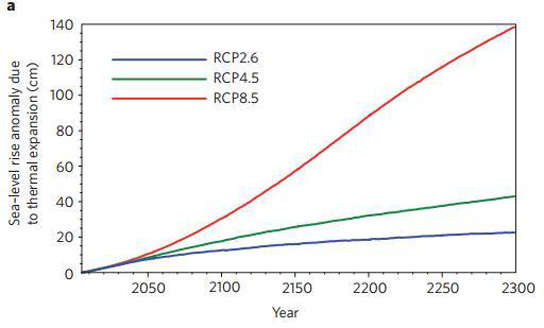Global sea levels have risen about seven inches in the past hundred years, and that pace is steadily accelerating thanks to climate change. This rise in sea levels threatens most coastal areas, and makes storm surges much worse, as in the case of hurricanes as well as smaller storms. Scientists published their findings in the journal Nature Climate Change. The oceans are likely to keep rising. Scientists project that if the planet keeps warming at the current pace, sea levels will rise between two and seven feet by 2100. Reducing emissions would help slow down the rate of sea-level rise, but it’s unlikely that it could be stopped altogether. Aggressive steps to cut emissions could help reduce the sea-level rise predictions by 6 to 20 inches in 2100, according to a recent study from the National Center on Atmospheric Research (NCAR). But the scientists believe the sea levels will continue to rise for centuries no matter what humans do. It’s easier to stabilize global temperatures by cutting carbon emissions than stabilizing sea-level rise, since the carbon dioxide that’s loaded into the atmosphere will likely have an effect on the oceans for centuries to come. When carbon dioxide traps more heat on the planet, the oceans get warmer and expand in volume and the ice caps start to melt, pouring more water into the oceans. These processes can’t be stopped quickly, even if we cease putting carbon dioxide into the atmosphere immediately. The NCAR paper estimates that if emissions go unchecked, the planet could warm by 4°C over pre-industrial levels by 2100, causing sea levels to rise between two and five feet. If emissions are cut and temperatures increase by below 2°C, the paper suggests that the sea levels would rise by 11 inches to 3.5 feet. Reference: “Relative outcomes of climate change mitigation related to global temperature versus sea-level rise” by Gerald A. Meehl, Aixue Hu, Claudia Tebaldi, Julie M. Arblaster, Warren M. Washington, Haiyan Teng, Benjamin M. Sanderson, Toby Ault, Warren G. Strand and James B. White III, 1 July 2012, Nature Climate Change.DOI: 10.1038/nclimate1529
